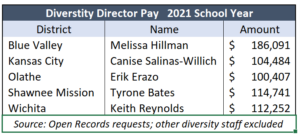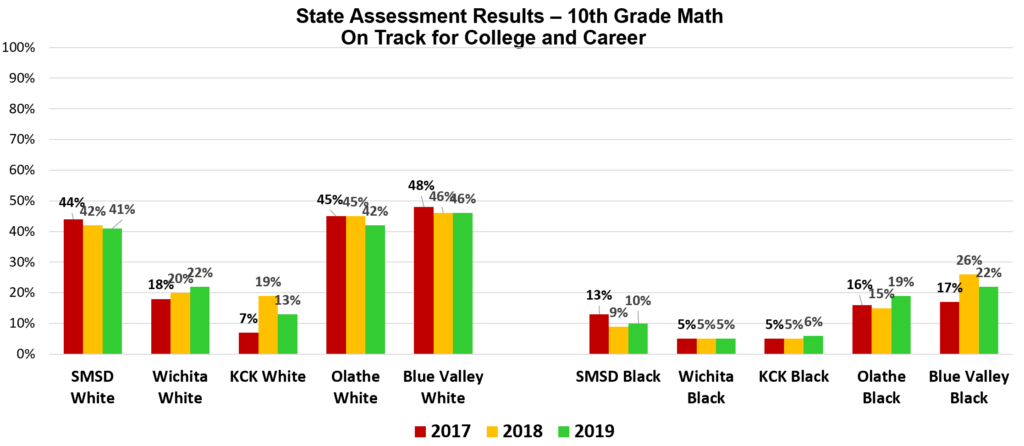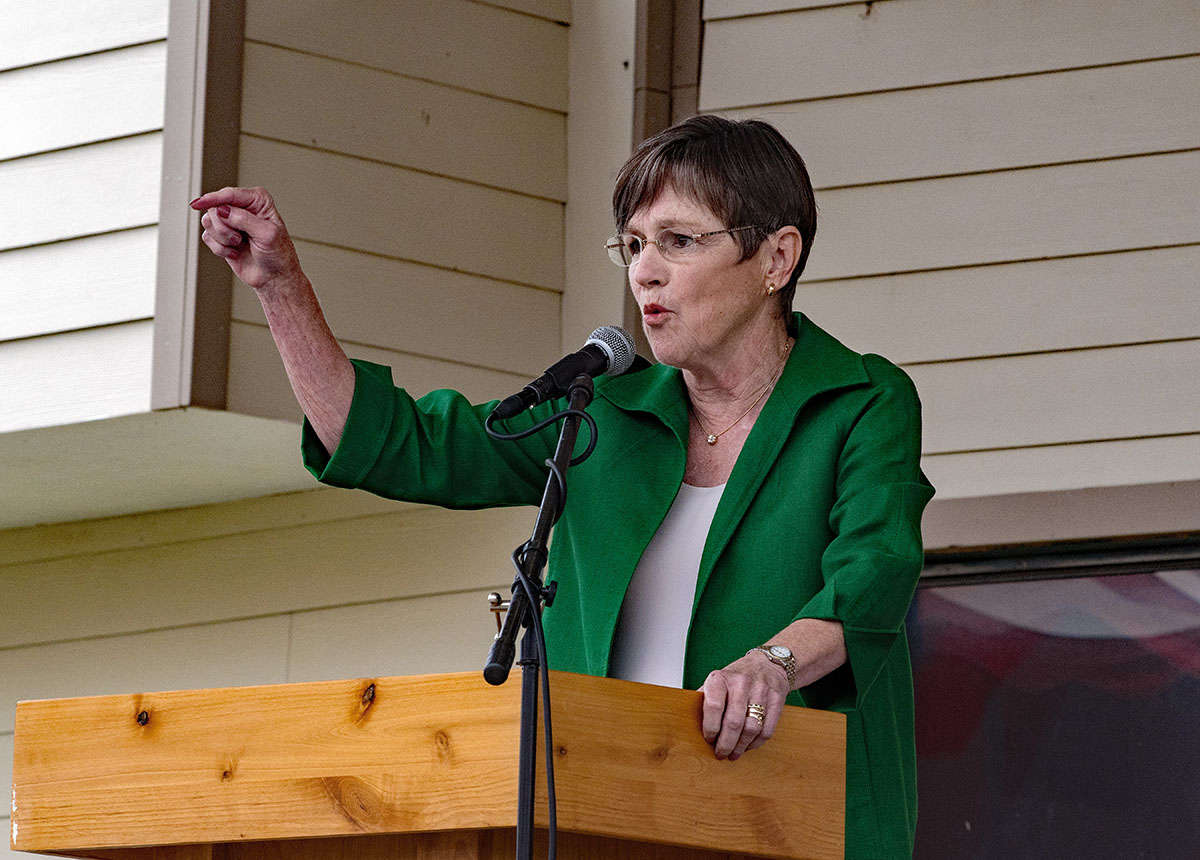The achievement gap between white and minority students likely increases when K-12 school districts hire chief diversity officers. That’s the finding of a Heritage Foundation study released earlier this week.
“An analysis of student test-score data shows that having CDO positions in school districts does not contribute to closing achievement gaps and is more likely to exacerbate those gaps,” Jay P. Greene, and James D. Paul, the study’s authors, wrote.
The researchers examined 554 school districts with more than 15,000 students. They learned that large schools in blue states are more likely than large schools in red states to employ chief diversity officers or CDOs. In red states, about a third of large school districts employ a CDO, but Kansas is an outlier. The administration of all five of Kansas’s large school districts includes a chief diversity officer.
All Kansas schools in study boast Chief Diversity Officers
The Kansas schools in the study included the Blue Valley School District, which employs Melissa Hillman as District Equity Coordinator; the Kansas City Kansas School District, which employs Canise L. Salinas-Willich as the Director of Equity and Inclusion; the Olathe School District, which employs Erik Erazo as the Executive Director of Diversity and Inclusion; the Shawnee Mission School District, which employs Tyrone Bates as the Coordinator of Diversity, Equity, and Inclusion; and the Wichita School District, which employs William Polite Jr as the Director of Equity, Diversity, and Accountability.
 The Kansas school districts handsomely compensate their CDOs, according to data retrieved at Kansas Open Gov.
The Kansas school districts handsomely compensate their CDOs, according to data retrieved at Kansas Open Gov.
Hillman, who is listed as the Blue Valley Chief Legal Counsel as well, earns $186,091 annually. KCK pays Salinas-Willich, who is listed as an elementary school principal, $104,404 per year. Erazo, Olathe CDO, earns $100,407 each year. The Shawnee Mission district pays Bates $103,382 annually to serve as its coordinator of diversity, equity, and inclusion. Meanwhile, William Polite Jr earns $112,252 each year as the Wichita School District Director of Equity, Diversity, and Accountability.
School districts also tend to have additional diversity staff. Blue Valley, for example, paid $272,000 to four diversity coordinators at high schools last year.
High diversity salaries do not equate to better outcomes
The high salaries do not translate into better educational outcomes, according to the researchers.
The researchers analyzed test scores, collected by the Educational Opportunity at Stanford University, at similar schools with CDOs and schools without CDOs to draw a conclusion: the existence of CDOs in school districts may exacerbate achievement gaps.
“In other words, CDOs may be implementing counterproductive educational interventions,” the report reads.
The authors report that a simple comparison between districts revealed that achievement gaps are larger in districts that employ CDOs. For instance, the average black student in a district without a CDO is 1.9 grade levels behind the average white student on standardized tests. In a district with a CDO, the gap is 2.4 grade levels.
An analysis of the data over time showed that hiring a CDO didn’t lead to lessening the gap. Instead, the data showed the achievement gaps growing over time in the districts with a CDO. The same is generally true of the five Kansas districts in the study.
The gaps between White high school students and Black high school students grew worse in Wichita and Kansas City between 2017 and 2019, according to the Kansas Department of Education. The gaps didn’t change in Olathe and Shawnee Mission, and only Blue Valley showed a small decline (partly due to a smaller share of White students being on track for college and career).

Greene and Paul studied district websites to determine the missions of CDO offices. In many cases, they said districts created diversity director roles to improve educational outcomes.
“If CDOs are not accomplishing their stated goals, what is accomplished by creating these positions?” the researchers ask in the report.
Improving outcomes not mentioned in KS DEI mission statements
Most of the Kansas schools in the study do not mention improving educational outcomes in their diversity and inclusion mission statements.
For instance, the Kansas City Kansas School District launched its Office of Equity and Inclusion in 2020. Its goal is to “advance a diverse, equitable, and supportive school culture through its commitment to awareness, education, and action steps.”
In Olathe, the department of Diversity and Engagement mission statement mentions “promoting a diverse, equitable, and inclusive environment,…providing training….for diversity and inclusion…ensuring policies and practices are equitable…and ensuring recruitment and hiring processes are equitable.” There’s nary a mention of student learning, achievement gaps, college readiness, or anything directly related to academics.
Shawnee Mission lost at least one award-winning teacher over the district’s diversity / critical race theory training.
CDOs designed to promote Left ideology, study finds
According to the Heritage researchers, schools in states with majority Democratic legislatures are more likely to employ CDOs. That remains true even when controlling statistically for other factors like enrollment numbers and minority populations.
“This supports the conclusion that CDOs are designed, at least in part, to promote ideological goals,” the researchers say. “…These findings are consistent with the observation that CDOs have more to do with political activism than with improving educational outcomes–or narrowing achievement gaps between students.”



